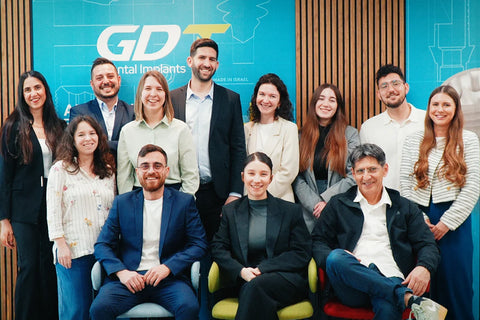Guided Bone Regeneration (GBR) and Guided Tissue Regeneration (GTR) are pivotal dental surgical techniques utilized to facilitate the growth of new bone and gingival tissue in areas where the bone or gingiva are insufficient in volume or dimensions. These procedures utilize barrier membranes to guide tissue growth, enhancing function, aesthetics, and enabling effective prosthetic restoration. While GBR focuses on the development of hard tissues along with the soft tissues of the periodontal attachment, GTR primarily addresses the regeneration of periodontal attachment.
Explanation and Product Showcase Video
To provide a comprehensive understanding of Guided Bone Regeneration and its clinical applications, we have prepared an explanation and product showcase video. This video will offer detailed insights into the GBR procedure, demonstrate the use of barrier membranes, and highlight the products designed to support this progressive dental procedure.
Historical Background
The concept of using barrier membranes to direct bone regeneration originated in orthopaedic research in 1959. The foundational principles of guided tissue regeneration were articulated by Melcher in 1976, emphasizing the exclusion of unwanted cell lines from healing sites to promote the growth of desired tissues. During the 1980s, successful clinical results in periodontology research spurred interest in applying these principles to rebuild alveolar bone defects using GBR. The principle of GBR was rigorously examined by Dahlin et al. in 1988 on rats, demonstrating that the selective ingrowth of bone-forming cells into a bone defect region is enhanced when adjacent tissue is excluded with a membrane. This was further confirmed by Kostopoulos and Karring in 1994, who found that GBR could be effectively used for bone regeneration on exposed implant coils.
Clinical Applications and Techniques
GBR is predominantly applied in dental surgery to support the growth of new bone on the alveolar ridge, facilitating stable dental implant placement. The procedure involves the use of barrier membranes to isolate the bone defect from the surrounding soft tissues, thereby allowing only bone-forming cells to populate the area. This method ensures the predictable and controlled regeneration of bone, which is essential for the successful integration and longevity of dental implants.
Conclusion
Guided Bone Regeneration represents a significant advancement in dental surgery, enabling the effective restoration of bone and gingival tissues. By employing barrier membranes and leveraging the principles of tissue exclusion, GBR provides a strong framework for bone regeneration, ensuring optimal outcomes for dental implant placements and other restorative procedures. As research continues to validate and refine these techniques, GBR stands as a cornerstone of modern dental regenerative practices, offering reliable solutions for complex clinical scenarios.











